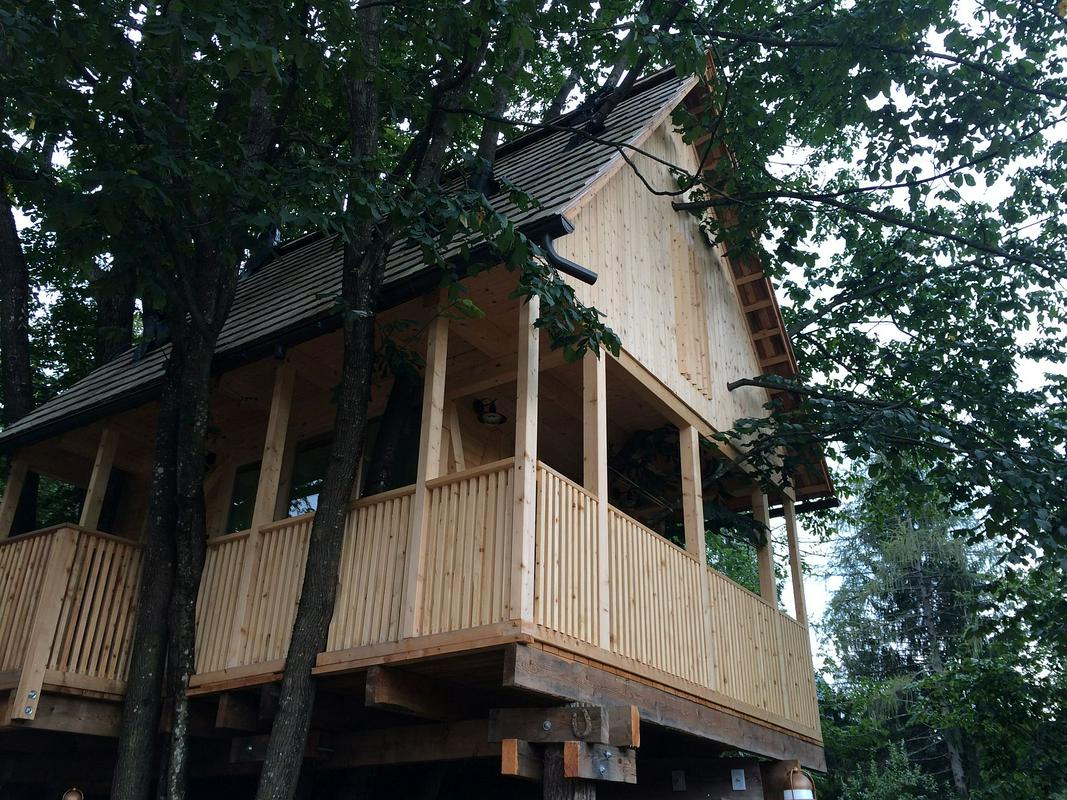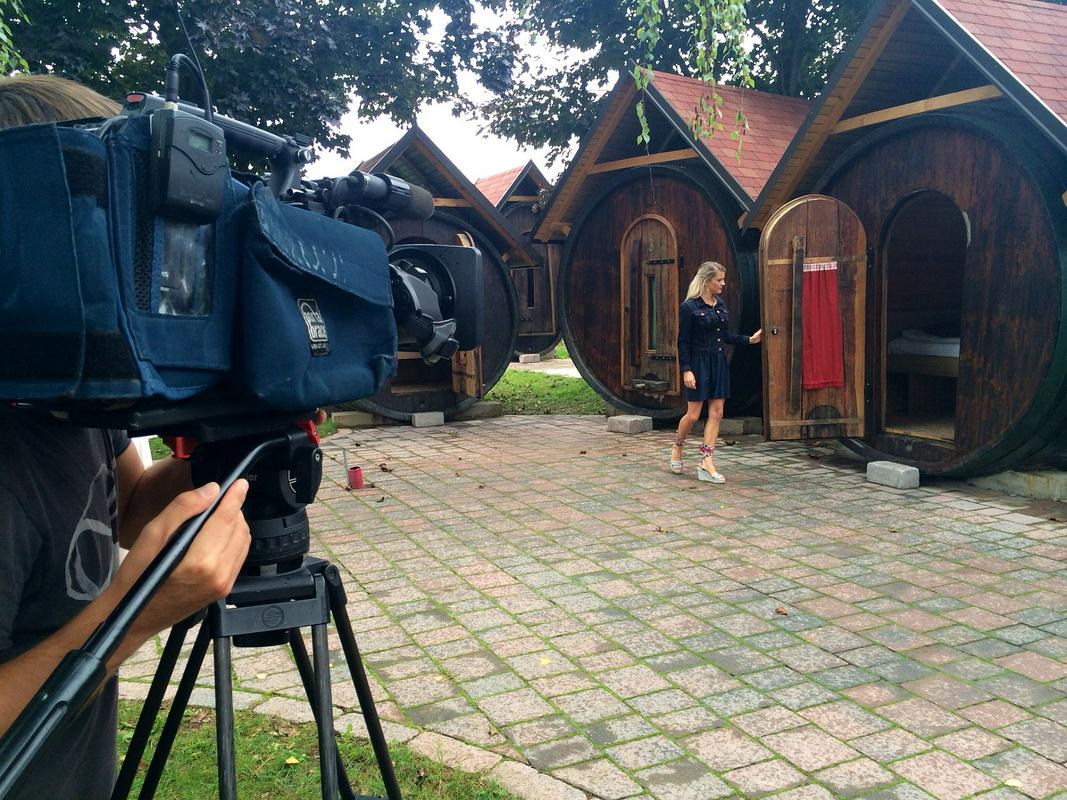


Glamping means living in nature, but with the luxuries offered by a hotel room, with bathroom facilities and a bed – and consequently without most of the inconveniences of camping. A mobile hotel room in the middle of nature is thus an answer to the needs of modern travellers in search of the local consumption, who at the same time request safety, comfort of home, and a harmonious contact with nature.
Glamping is a global trend in the field of camping, thus laying the foundations to ecological, sustainable tourism. Therefore it is not a coincidence that lately it has been establishing itself in Slovenia as well, as an innovative offer. The centre of glamping in our country is Bled. They were the first to start with luxurious camping in the eco village Gozdne vile (Forest fairies) at Velika Zaka. There you can spend the night in a wooden hut built of larch wood ('kožarice'), and take a bath in an outdoor firewood-fuelled wooden hot tub. Lately the most attention-grabbing boutique resort for nature lovers became Garden Village in Bled. At an abandoned garden centre some 300 metres distant from the lake of Bled a number of ecological wooden tree houses have been built, and one of the more innovative restaurants in Slovenia. A brook runs through the dining room, and their offer is focused on affluent guests from abroad.
Glamping destinations can be found in other parts of Slovenia as well. At Bloke the newest resort was built, with wooden tents set on the coast of the lake. From the opening in May till September they had 500 overnight accommodations, which was previously the number of overnight stays throughout the year. By glamping they intend to lure a new segment of guests to the edge of the Notranjska region, the Green Karst destination – by principles of sustainable development it should encourage tradition, and local economy.
The luxurious camping is a way for prolonging the tourist season far into autumn, and early spring. It would be especially important for the region on the Kolpa river, as the camps there this year had a record low number of visitors. In Vinica you can spend the night in 'villas for cyclists' made of clay. They are mostly counting on cyclists and motorists, as they usually can't carry all the necessary equipment for camping. Also in Kanu Camp in Radenci in the middle of the Poljanska valley along the Kolpa river new wooden huts have been built; there guests are offered the stories of local cuisine, vine, and a package of sport experiences.
Glamping is mainly about innovativeness. Besides the already mentioned possibilities, in Slovenia you can also chose to sleep in a treetop or on a hayrack in Luče, in an earth house with thatched roof in Veržej, or in a tepee or a hut on water in Terme Čatež. Glamping is also complementing the usual spa offer. In Ptuj, where you can spend the night in a wine barrel, the tourist workers wish to connect glamping with the tradition of Ptuj winemaking, and the story of the rich Roman heritage.
Marjana Grčman, TV Slovenija
Translated by G. K.


































































